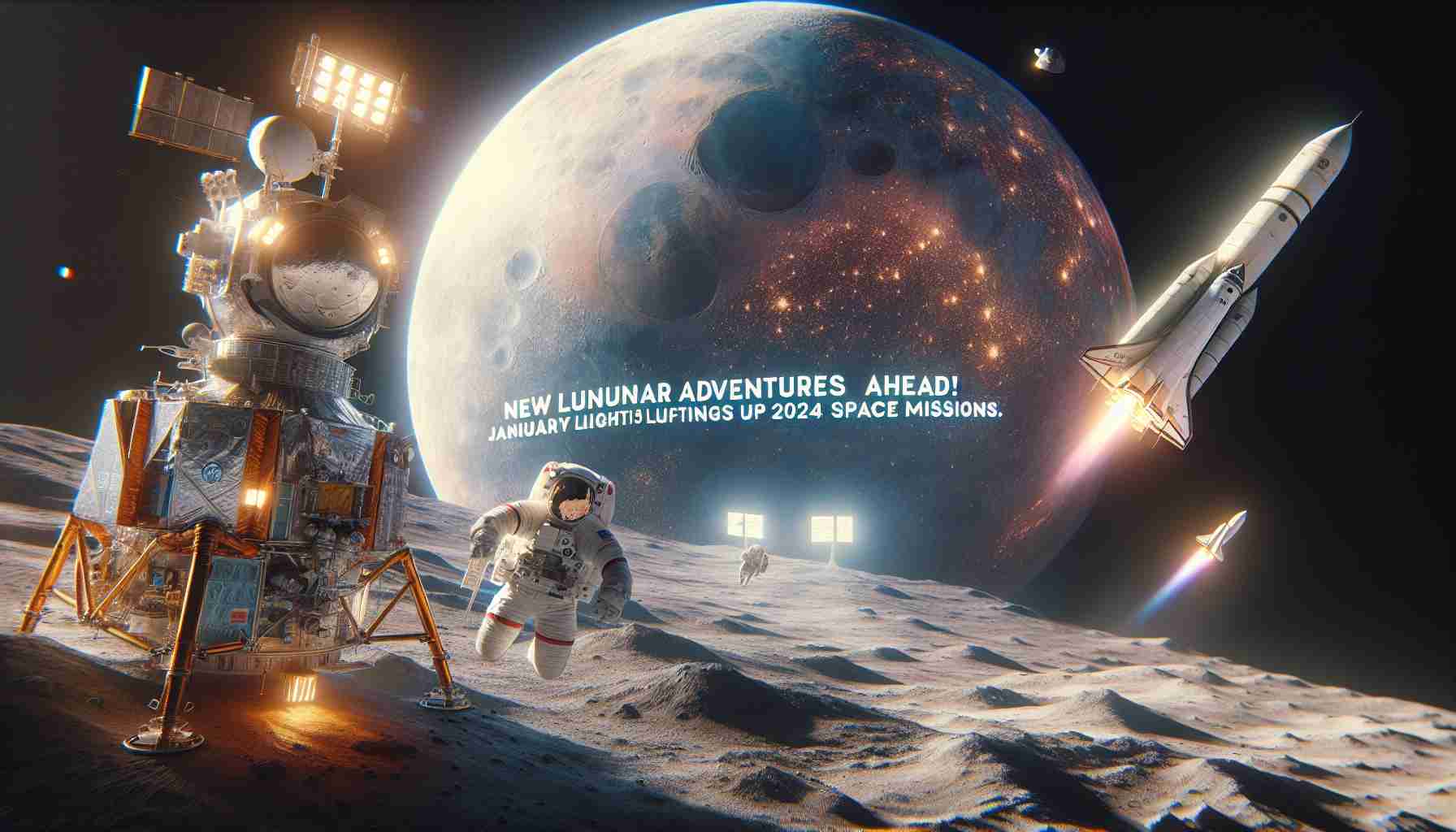In a significant shift from previous plans, Firefly Aerospace has unveiled a new launch schedule for its inaugural lunar lander mission. Originally destined for a late 2024 journey, the Blue Ghost 1 lander is now slated to take off in mid-January aboard a SpaceX Falcon 9 rocket from Florida.
Successful Preparations
The announcement follows the successful completion of extensive testing at NASA’s Jet Propulsion Laboratory in October. The tests demonstrated the lander’s readiness for the rigors of a lunar mission, a significant milestone surpassed according to Firefly’s leadership. They expressed strong confidence in the lander’s capability to make a soft landing and fulfill its mission goals.
A Shift in the Space Race
While this rescheduling marks a delay from the originally targeted fourth-quarter slot, Firefly Aerospace’s timely revamping offers hope amid broader industry adjustments. Other notable lunar missions, including those by Japan’s ispace and Intuitive Machines, are also lining up for new launch dates in early 2024. Notably, Intuitive Machines still eyes a spot before Firefly with a potential February launch, which could potentially land them on the moon first through a direct trajectory.
Mission Details
The Blue Ghost 1 mission, named “Ghost Riders in the Sky,” will spend 45 days en route to the moon, entering its orbit and eventually landing near Mons Latreille. Loaded with 10 NASA payloads valued at $93.3 million, the spacecraft is equipped to operate for two weeks into the lunar day and parts of the lunar night, making its mark in lunar exploration. Collaboration with other missions ensures communication clarity and mission harmony among upcoming lunar landers.
How Firefly Aerospace’s Lunar Mission is Redefining Humanity’s Reach
Firefly Aerospace’s ambitious plans to launch its Blue Ghost 1 lunar lander have not only captured the imagination of space enthusiasts but also marked a significant advancement in the realm of space technology and exploration. As industries gear up to make significant strides in lunar missions, the ramifications of such endeavors could have profound impacts on the future of technology and human understanding.
The Broad Impact on Human Development and Technological Advancement
The successful launch and landing of the Blue Ghost 1 could lead to vital discoveries about lunar resources. Identifying and utilizing elements from the moon could potentially revolutionize industries on Earth, offering new materials for construction, energy, and even food production. Access to a broader range of resources can propel technological innovation, potentially allowing for the development of new technologies and cutting-edge products.
Moreover, Firefly’s collaboration with NASA to carry ten payloads raises questions about future joint ventures between private enterprises and government agencies. Such collaborations can leverage the agility of private companies with the vast experience and resources of governmental bodies, accelerating scientific advancements exponentially.
Interesting Facts and Controversies
One interesting facet of the Blue Ghost 1 mission lies in its strategic timing and partnerships. While Intuitive Machines and Japan’s ispace are on a similar race, Firefly’s choice to align with SpaceX’s Falcon 9 not only showcases growing synergies within the private space sector but also sparks controversy regarding competitive advantages. Is partnering with a company like SpaceX tipping the scales unfairly for other companies attempting to make strides independently?
Another point of interest is the mission duration and trajectory strategy. Spending 45 days en route to the moon raises questions about the mission’s efficiency and risk management compared to more direct, albeit potentially riskier, paths being considered by their competitors.
Advantages and Disadvantages of the Mission’s Timing and Trajectory
Advantages:
The rescheduled timing aligns with a slot that may provide more optimal launch conditions, potentially reducing the risk of weather-related delays. Additionally, a slower trajectory allows for further evaluations during transit, increasing the mission’s chance of success.
Disadvantages:
The delay might give competitors an edge, potentially allowing them to capture valuable data from their missions first. Moreover, a longer journey increases exposure to space hazards, such as cosmic radiation, which could impact the payloads and onboard instruments.
Questions Worth Asking: How Are These Missions Benefiting Humanity?
– What potential benefits do we gain from these lunar missions?
Multiple payloads aboard the Blue Ghost 1 cater to scientific experiments that could yield breakthroughs in understanding the moon’s composition and formative history. Furthermore, developing lunar technology can serve as a precursor for future Mars missions.
– Do these missions justify their costs?
While expensive, the return on investment could be significant in the long term, as lunar resources become pivotal to sustaining future space explorations and possibly benefiting terrestrial industries.
Interesting opportunities lie ahead as Firefly Aerospace pioneers human reach into lunar landscapes. As these explorations unfold, humanity may find itself at the cusp of a new era—a lunar renaissance of sorts, bringing the moon much closer as the next frontier of scientific pursuit and technological innovation.
For ongoing updates and more information on space technology, visit NASA and SpaceX.
